• A fresh start for multiple NFL teams: The Washington Commanders and New England Patriots have the most effective cap space. The Arizona Cardinals have the most draft capital. But which team has the best means to improve its roster if we combine both types of offseason assets?
• Chargers in trouble? The Los Angeles Chargers made a few expensive moves to strike while Justin Herbert was on a rookie contract, but their moves either failed to work out (J.C. Jackson) or were neutralized by injuries (Mike Williams‘ extension and the trade for Khalil Mack). Should they accept that they can’t compete in the AFC West for the next two seasons — even with Herbert at quarterback — and go through a rebuild that eventually puts them at or near the top of this ranking in the future?
• Dig into the numbers for yourself: PFF's Premium Stats is the most in-depth collection of NFL and NCAA player performance data. Subscribe today to get full access!
Estimated Reading Time: 11 minutes
Click here for more draft tools:
2024 Mock Draft Simulator | 2024 Big Board | 2024 Draft Guide
2024 Player Profiles | 2024 Mock Drafts | NCAA Premium Stats
The NFL offseason is a season of hope, as almost every team hopes to eliminate the weaknesses that kept them from reaching the Super Bowl the previous season.
Teams can use their draft capital and cap space to increase the quality of their rosters in various ways to eliminate weaknesses and improve overall. In this article, we will rank teams by their offseason assets.
Draft capital
Ranking teams by their draft capital is a fairly straightforward exercise. A team’s draft capital is simply the combined value of all their draft picks, as measured by a draft value chart.
We use the PFF draft value chart, which estimates the value of a draft pick by projecting the amount of PFF WAR a player drafted at that pick generates on average during his first four years in the league (the rookie contract).
The following chart illustrates how much each team has in draft capital ahead of the 2024 NFL Draft, with the value of each pick shown in each team’s bar.
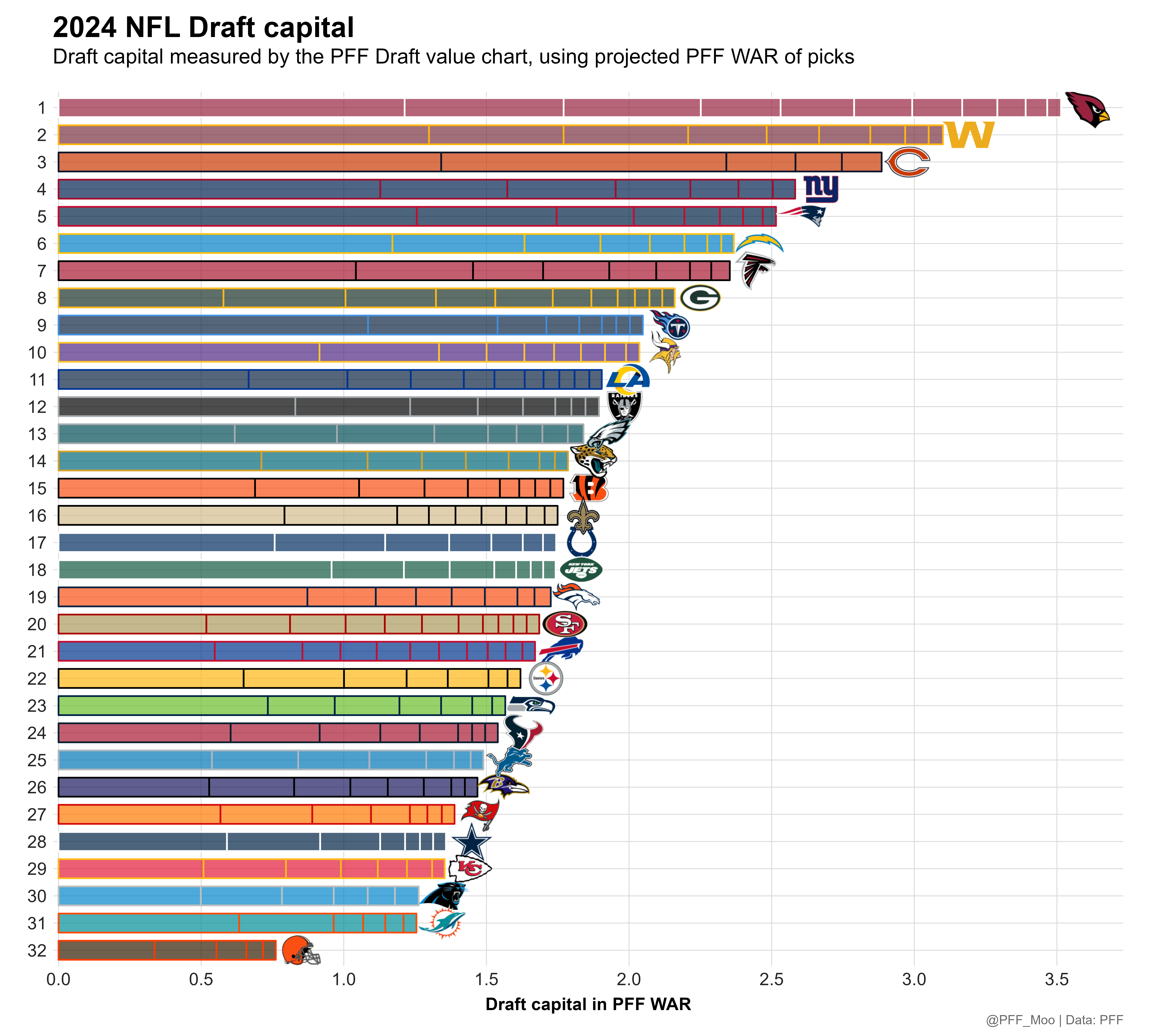
Now, to the elephant in the room: The Carolina Panthers rank only 30th despite “earning” the first overall pick this year.
Trading away that 2024 first-round selection to draft Bryce Young in the 2023 draft ended up costing them roughly 50% of their total draft capital this year, as the first overall pick is roughly worth as much as all of the Panthers' other picks combined.
The Arizona Cardinals lead the league in draft capital, as they set themselves up with smart trades last year. The Cardinals are now in prime position to finally build around Kyler Murray long-term after their short-term approach to build around the young quarterback (2020 and 2021) came crashing down very quickly.
Cap space
Ranking teams by cap space is not as straightforward, as cap space is much more fluent. Still, we can look at two key metrics provided by our friends at OverTheCap.com:
• Effective cap space: A team's available cap space minus the cap its rookie class will cost.
• Restructure potential: Aside from using their effective cap space, teams can increase their cap space without changing their roster by restructuring existing contracts. They do this by converting a player's 2024 base salary or roster bonus into a signing bonus that is prorated over multiple years. This saves cap for the current year but pushes all of the saved cap into the future.
Restructure potential just counts how much cap a team could save for 2024 if they:
1. Restructure all their existing contracts by the maximum amount, i.e., prorate every dollar of base salary up to the minimum base salary over the existing future years of all their contracts. These are called simple restructures.
2. Use more restructures to save 2024 cap. For example, adding additional void years to existing contracts or extending existing contracts with new money to save base salary in 2024. These are called maximum restructures.
Restructure potential is not as valuable as effective cap space. For example, having $50 million in cap space is better than having $50 million in restructure potential.
Cap space can be used flexibly and can even be carried over to the next season, while every dollar saved through restructures is guaranteed to hit the cap in future years.
Another way of saying that is that draft capital and effective cap space can be used to construct a better team over the next several years, while restructure potential can almost exclusively be used to get better (or at least not get worse) for the upcoming season at the cost of having less wiggle room in the future.
That’s why high restructure potential should mostly be used by teams with a realistic window of competing for a deep playoff run.
The following chart shows how much effective cap space and restructure potential each team has. The anti-diagonal lines are chosen such that we consider restructure potential half as valuable as effective cap space. That’s not only an arbitrary downranking of restructure potential but also reflects the reality that teams barely use all of their theoretical restructure potential.

There is an obvious negative correlation between effective cap space and restructure potential, which is intuitively explained. Restructure potential is almost 100% correlated to the base salary or roster bonus the team has to pay their players in 2024. Obviously, the more base salary a team has to pay, the less effective cap space it will have.
For example, the Washington Commanders have few expensive players under contract, especially after trading away Montez Sweat and Chase Young during last year’s trade deadline. Therefore, they have a lot of effective cap space, but this also means they have little restructure potential, as they're currently not scheduled to pay much base salary in 2024.
A combined ranking
The Washington Commanders and New England Patriots have the most effective cap space. The Arizona Cardinals have the most draft capital. But which team has the best means to improve its roster if we combine both types of offseason assets?
To do that, we start by bringing effective cap space and restructure potential on one scale. There are several ways to do this, but we stay with the idea that effective cap space is twice as valuable as restructure potential.
To get an even more granular understanding, we differentiate between simple restructure and maximum restructure potential (as explained above). We define a team’s true cap space as the sum of the efficient cap space plus two-thirds of the simple restructure potential plus one-third of the additional maximum restructure potential on top of the simple restructure potential.
For example, if a team has $50 million effective cap space, $60 million simple restructure potential and an additional $30 million maximum restructure potential, the true cap space would be:
$50M + ⅔ * $60M + ⅓ * $30M = $100M
The weights ⅔ and ⅓ are chosen such that the value of restructure potential is generally half the value of effective cap space, but simple restructure potential is considered more valuable than maximum restructure potential. The rationale for this is that extending a contract specifically adds future guaranteed money to contracts, so it comes with an even greater cost in the future to save cap space in the present.
The following chart shows true cap space on the x-axis and draft capital on the y-axis:
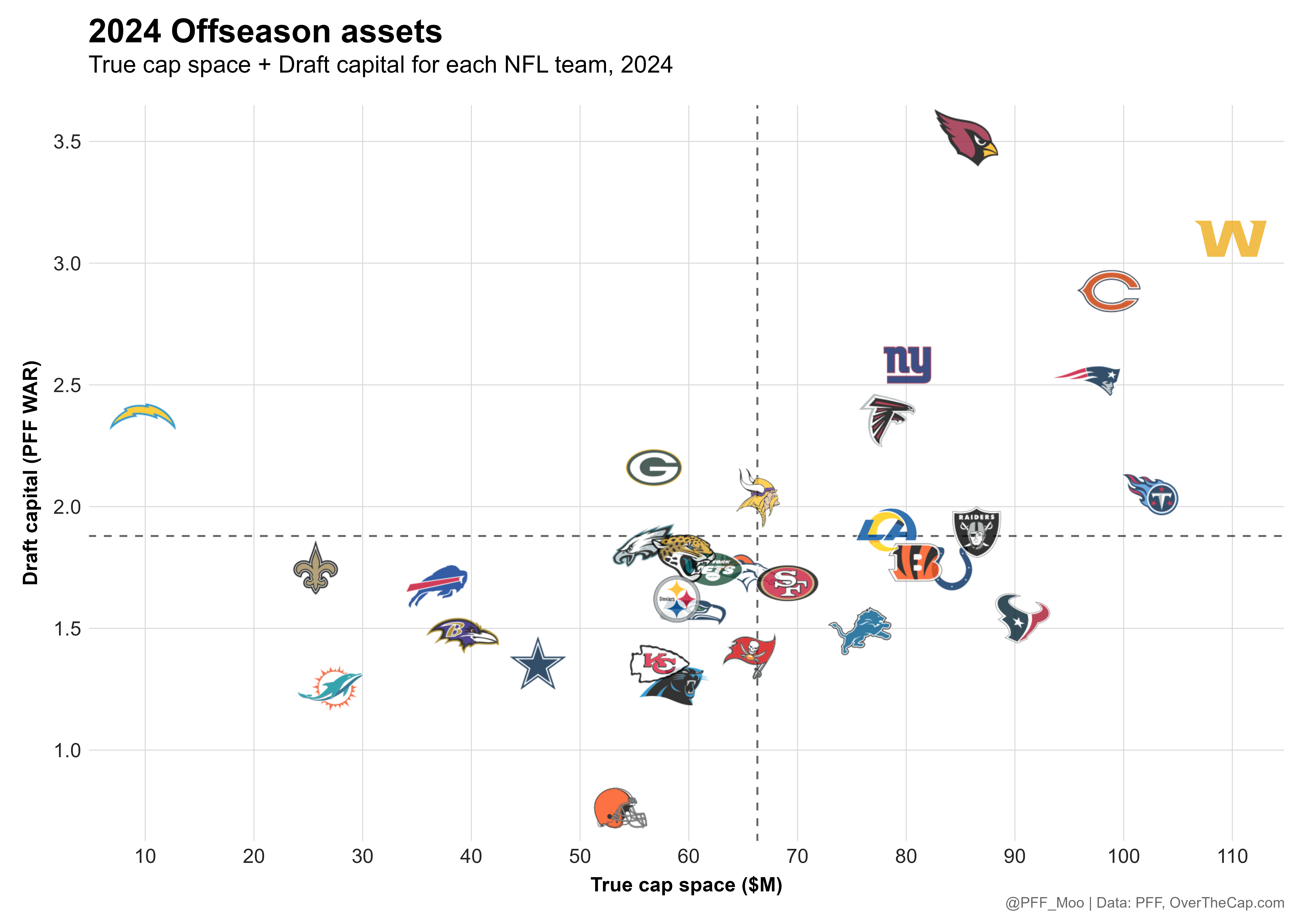
To bring both axes on the same scale, we normalize the draft capital, the effective cap space and the restructure potential. Draft capital and effective cap space are normalized to a number between 0 and 1, while restructure potential is normalized to a scale between 0 and 0.5 to account for our earlier assumption that it’s valued at half as much as effective cap space.
We can then add the normalized numbers for each team and end up with a final ranking.
The following bar chart shows the teams ordered by offseason asset value. The contribution from each of the three types of assets is visualized in different colors.
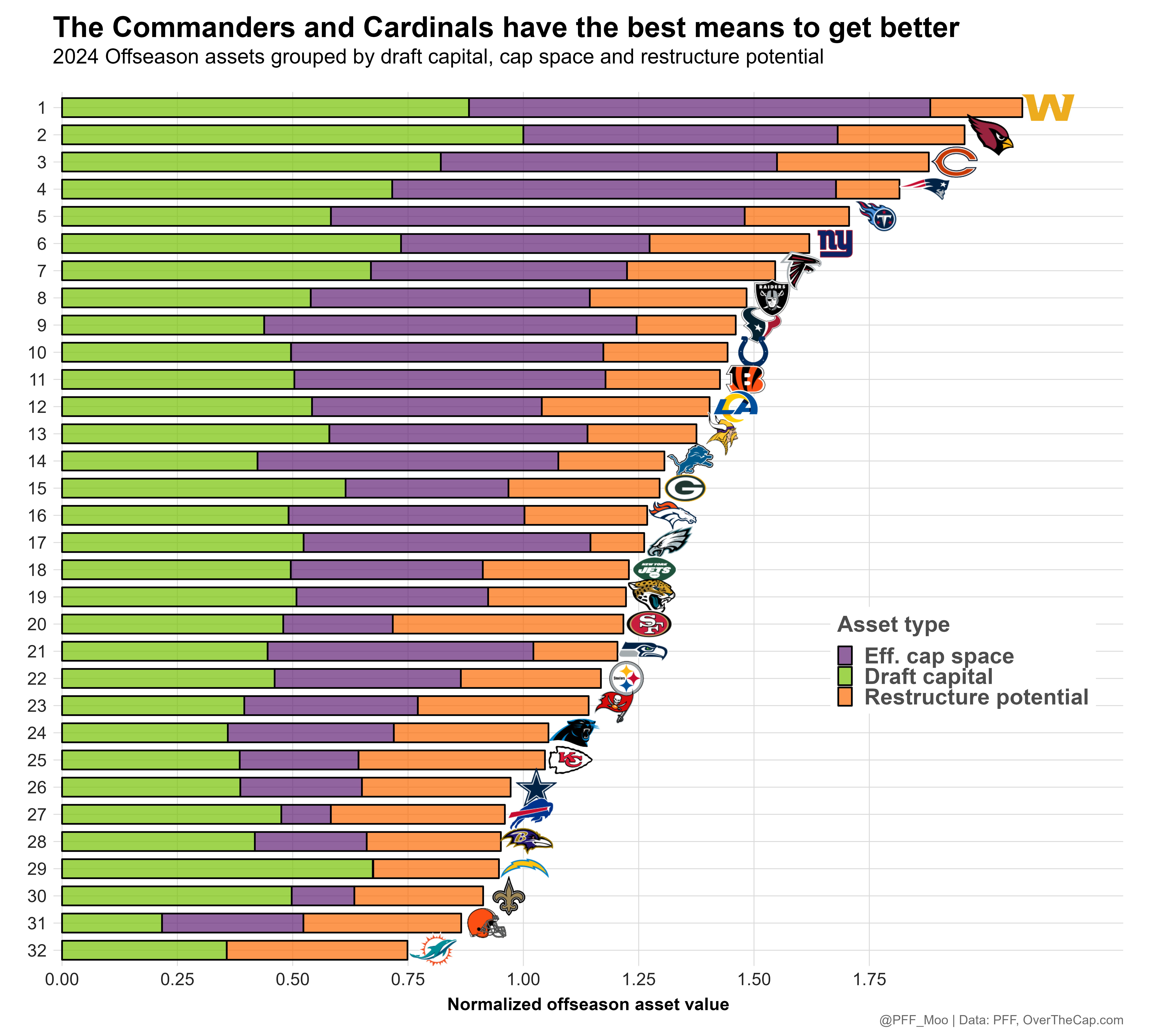
The Commanders dominate this list due to ranking top-two in both draft capital and cap-space assets. However, it must be noted that the Commanders have to use their second overall pick on a quarterback to set themselves up for the mid-term future, while the Cardinals already have what they perceive to be their franchise quarterback.
Depending on how the draft falls, the Cardinals could potentially jump the Commanders in assets by trading down for another haul, thereby increasing their draft capital.
The Cincinnati Bengals and Houston Texans stand out as good teams that still have above-average assets to improve. Both teams are set at quarterback and have the means to build around those players this offseason and beyond.
If second-year quarterback Anthony Richardson plays well in his second season, the Indianapolis Colts could be another team that rapidly rises up the NFL ranks with a good offseason.
A similar thing could be said about the Los Angeles Rams, a team that — thanks to the rise of wide receiver Puka Nacua and the rejuvenation of veteran quarterback Matthew Stafford — performed a surprisingly quick and competitive rebuild and will pick in the first round for the first time since 2016 when they selected Jared Goff at first overall.
Of course, Stafford can’t keep playing at such a high level forever, but they have a shot at another window of contention before his best days are over — and that is a better outlook than they would have expected a year ago.
Of course, we also have to discuss the team at the bottom.
Notably, more than half of the Miami Dolphins’ offseason assets come from restructure potential, and that’s after we counted them with only a factor of 0.5 compared to the other assets.
The Dolphins traded for Tyreek Hill, Bradley Chubb and Jalen Ramsey over the last two years, and they have enjoyed two successful seasons with a healthy Tua Tagovailoa at the helm. However, they’ve now reached a point where they have to decide whether they can continue down that road while paying Tagovailoa franchise-quarterback money.
The Los Angeles Chargers are very similar to the Dolphins in the sense that they made a few expensive moves to strike while Justin Herbert was on a rookie contract, but their moves either failed to work out at all (J.C. Jackson) or were neutralized by injuries (Mike Williams‘ extension and the trade for Khalil Mack).
This at least gives the Chargers more draft capital than the Dolphins, as they weren't successful last season. But in terms of cap space, it looks just as bleak for them as for the Dolphins.
I’d advise the Chargers to go a similar route to the one the Cardinals took. They should accept that they can’t compete in the AFC West for the next two seasons — even with Herbert at quarterback —and go through a rebuild that eventually puts them at or near the top of this ranking in future iterations.
Knowing that they will enjoy top-shelf quarterback play for a long time, they would have the luxury to go the long road instead of pushing in their limited number of chips right now. However, I doubt this will happen, as their decision to hire new head coach Jim Harbaugh doesn’t particularly signal “rebuild.”
Finally, a few words about the New Orleans Saints.
Restructures are a means to improve and/or keep the existing roster in a window of being a contender. The Saints started using them a lot in the final years of Drew Brees’ Hall of Fame career.
This was a reasonable and probably even good strategy at that point since it made use of the very simple idea of restructuring contracts: By pushing cap hits for players who are playing for you right now to the future, teams can build a roster that (provided the players perform as expected) beats out most NFL rosters simply because you virtually spend more on your players than any other NFL team.
Combined with their strong rookie classes from 2016 and 2017, New Orleans built arguably the best roster from 2017 through 2020 — one that, let’s be honest, should have won a Super Bowl.
Between two Minnesota miracles, a missed DPI call and the Lombardi Trophy’s mysterious proclivity to gravitate toward Tom Brady or Patrick Mahomes, it just didn’t work out for them.
After Drew Brees called it a career after the 2020 season, the Saints doubled down on their strategy and descended into a spiral that shows the risk of restructuring too much cap space into the future.
The Saints have three problems right now:
1. Instead of pushing cap into the future so they can spend more than other teams in 2024, they are just pushing cap into the future to make up for the money they previously pushed to 2024. After the initial phase of leaning into restructuring potential, the advantage is gone since teams simply pay the debts from past years and then have to borrow from the future again to be able to spend as much as other teams despite paying back their debts.
2. This ultimately means that the Saints are currently not restructuring contracts to build a superior roster. They are restructuring contracts to merely keep a mediocre roster together.
3. They can’t stop doing this right now, as they don’t have enough cap casualties to get under the cap. Their only way to get under the cap was (and is) restructuring and extending contracts again.
In summary, the Saints are effectively able to spend roughly the same on their roster as other teams, though with much less roster flexibility and much more cap space that won’t translate to the field already taken away. It is obvious that this puts them at a disadvantage.
The Saints’ current situation illustrates why it makes sense to consider restructure potential only half as valuable as effective cap space and draft capital.
Used wisely and with the correct timing, it can be really useful to push a contending roster over the top. But the price will be paid in the future, and sometimes, a team can even maneuver itself in a vicious circle that takes a lot of courage to escape even after the window of contention is over. And the New Orleans Saints have been inside it for several years now.
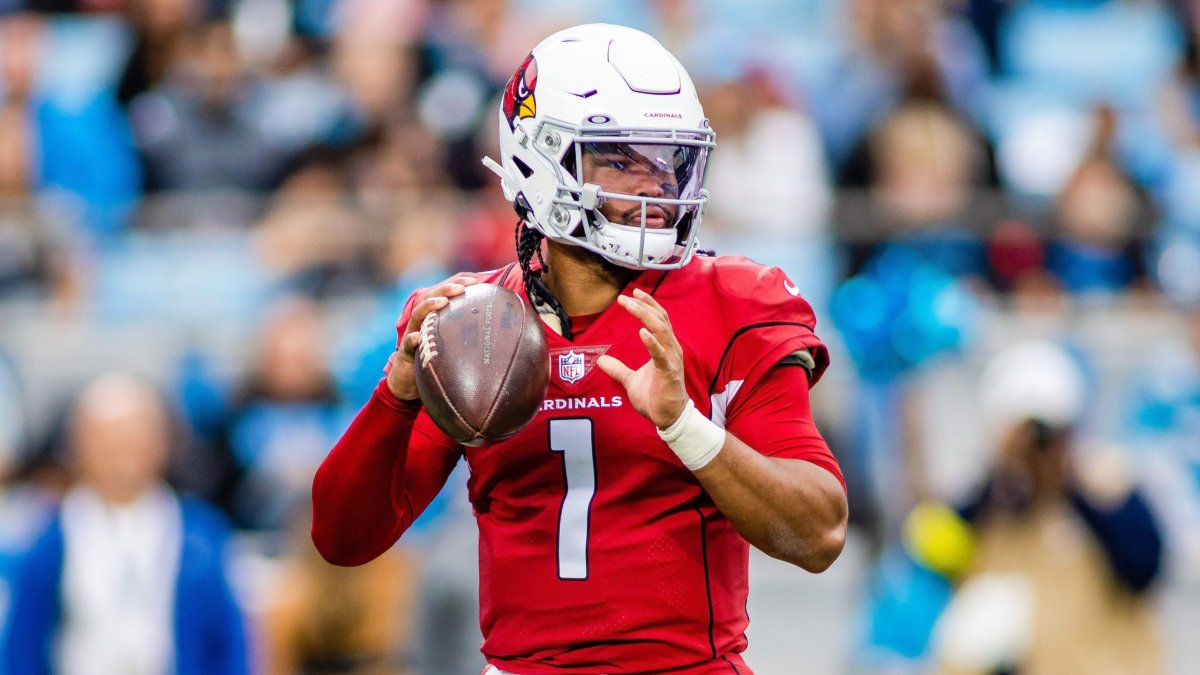

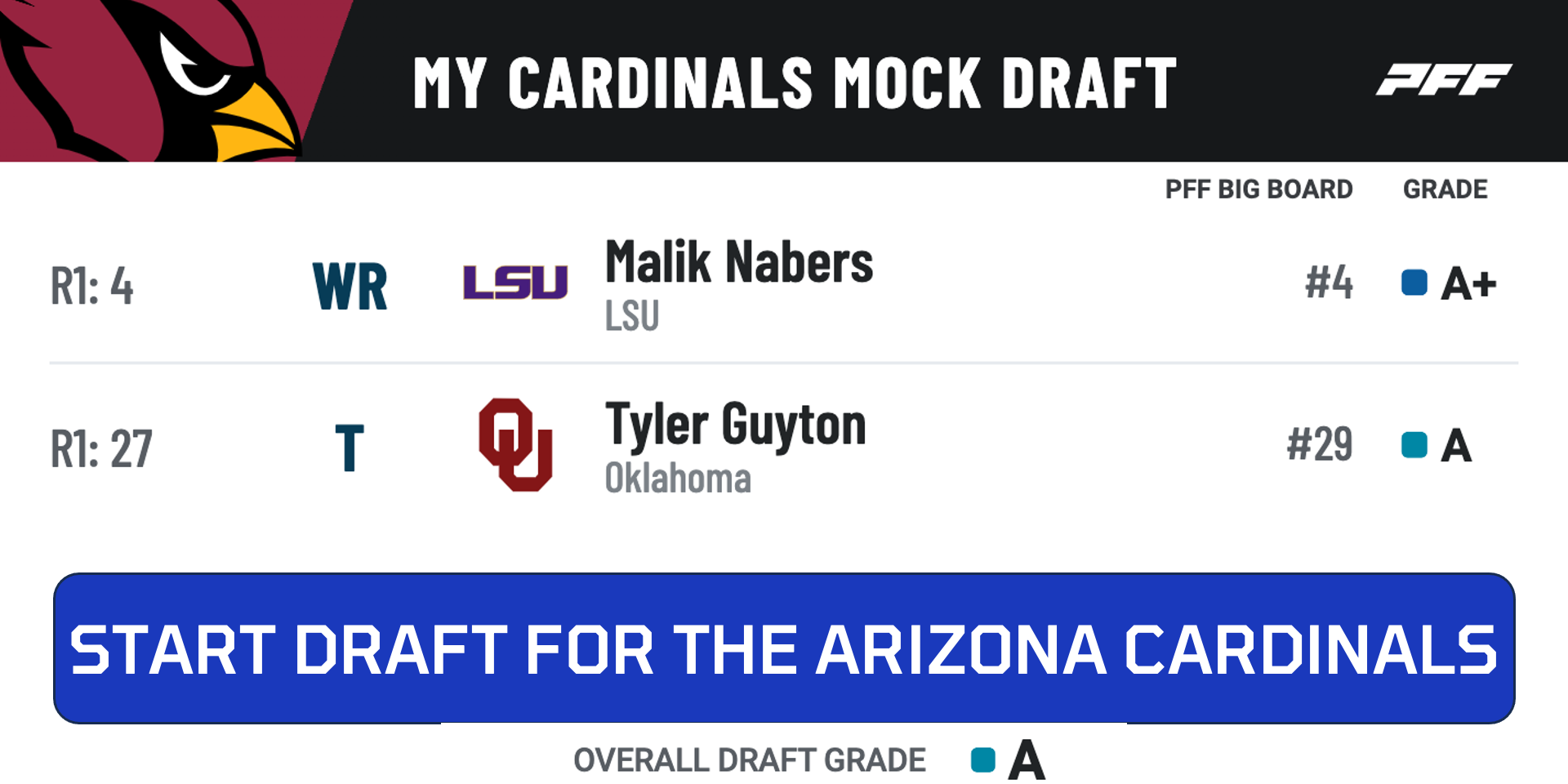
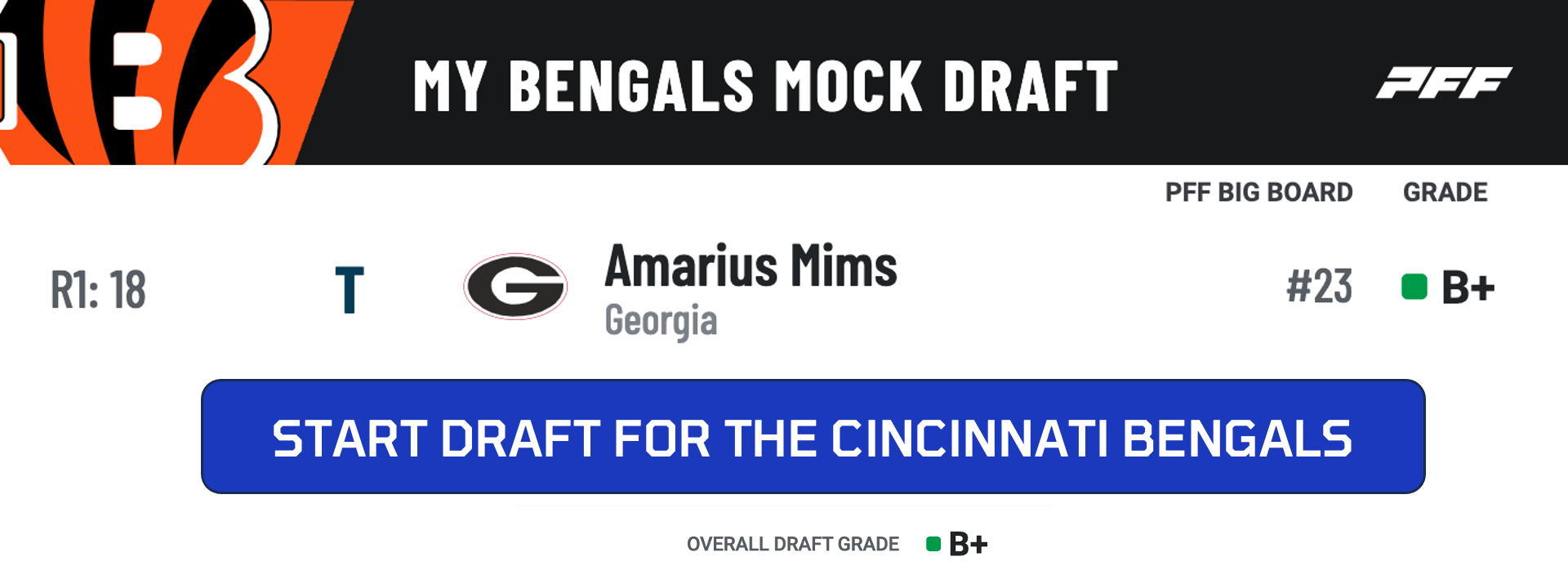
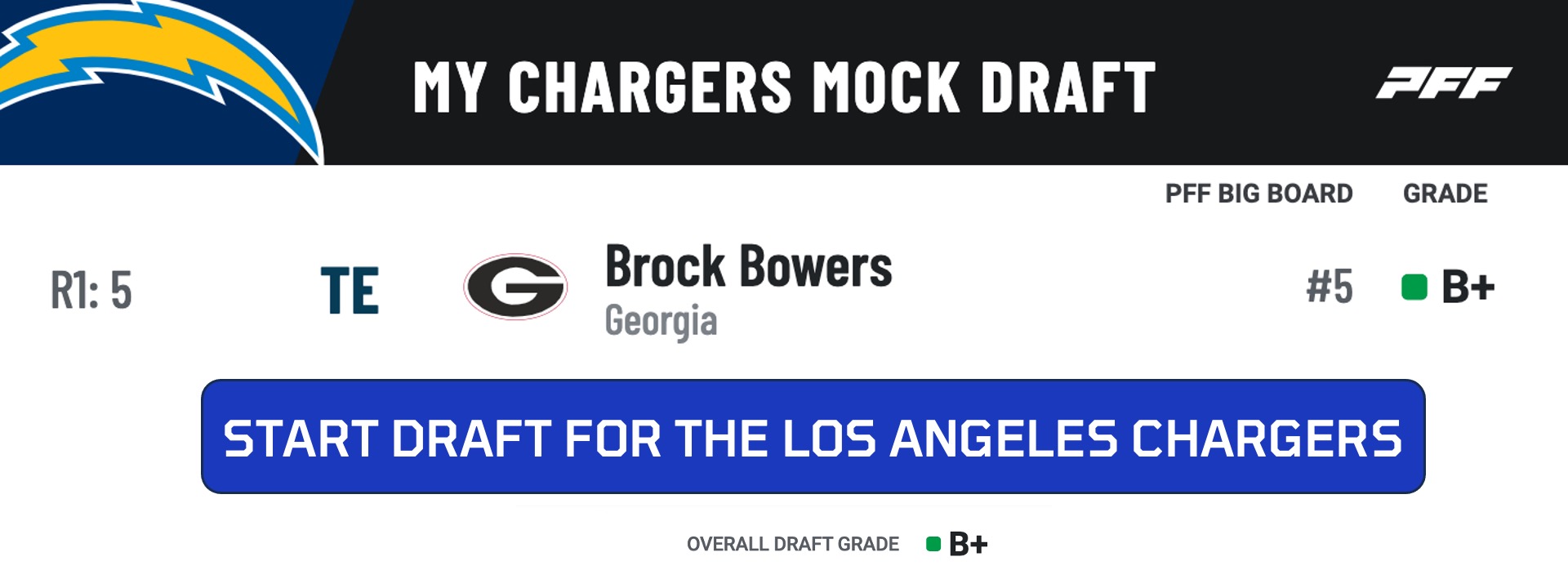


 © 2025 PFF - all rights reserved.
© 2025 PFF - all rights reserved.